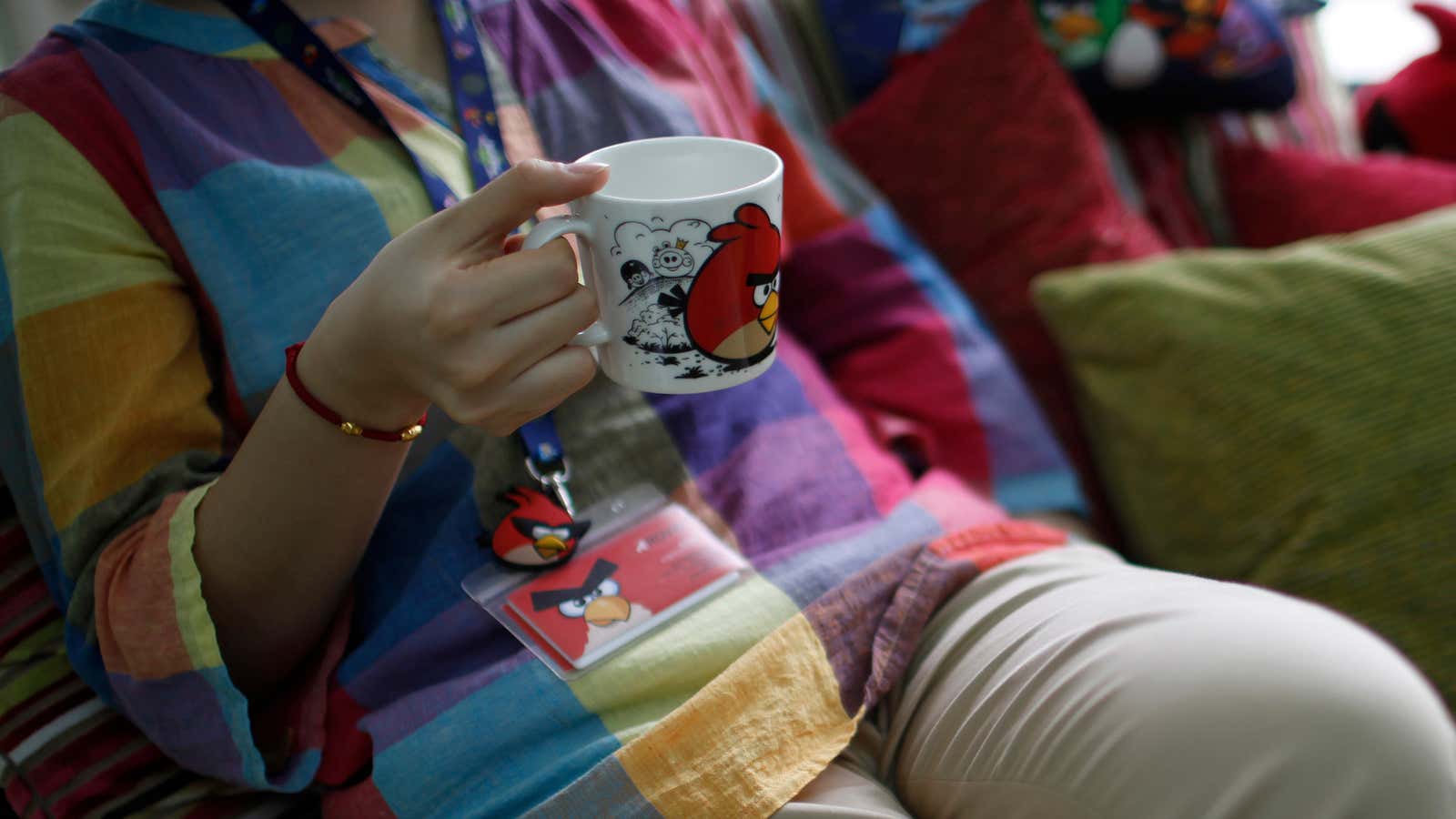Rovio, the media company behind Angry Birds, is finally joining the world of free apps. The latest version of the game, Angry Birds Go!, which launched last month, is Rovio’s first free-to-play Angry Birds game. But unlike most companies who operate a “freemium” model, charging nothing upfront and instead focusing on getting users to fork over cash for upgrades and add-ons once they’re hooked, Rovio is embracing the model for a different reason.
It’s been four years since the Angry Birds franchise first hit the app market, and the games have been downloaded more than two billion times and grossed over half a billion dollars. But the business these days is as much about the merchandise as the game itself. In 2013, reports the Wall Street Journal today, the company made nearly half of its cash (paywall) on licensing agreements (over $200 million in all), up from 30% the year before. These cover everything from Angry Birds t-shirts, stuffed animals and cell phone covers to hats and shoes. Rovio even expanded its licensing agreement with mammoth toy-maker Hasbro this summer, and has plans to license the world’s largest Angry Birds theme park.
Rovio seems to have calculated that it can make more money from people buying bird- and pig-decorated paraphernalia than off games themselves, which is why it no longer charges to play. “We look at this from the audience-reach point of view,” executive vice president for games at Rovio Jami Laes told the Wall Street Journal.
Angry Birds Go! is also a step into a new genre for Rovio. Unlike its predecessors, which entail firing birds out of slingshots, it involves racing them in cars down an obstacle course. That likely means that Rovio plans to expand to other genre games, especially if this latest version is a hit. “It is kind of an implication of our future direction, where we are thinking more of games as free-to-play. We think that when done right, free-to-play is the best model for our fans, consumers, developers and publisher,” Laes told the WSJ. He probably should have mentioned licensees, too.
